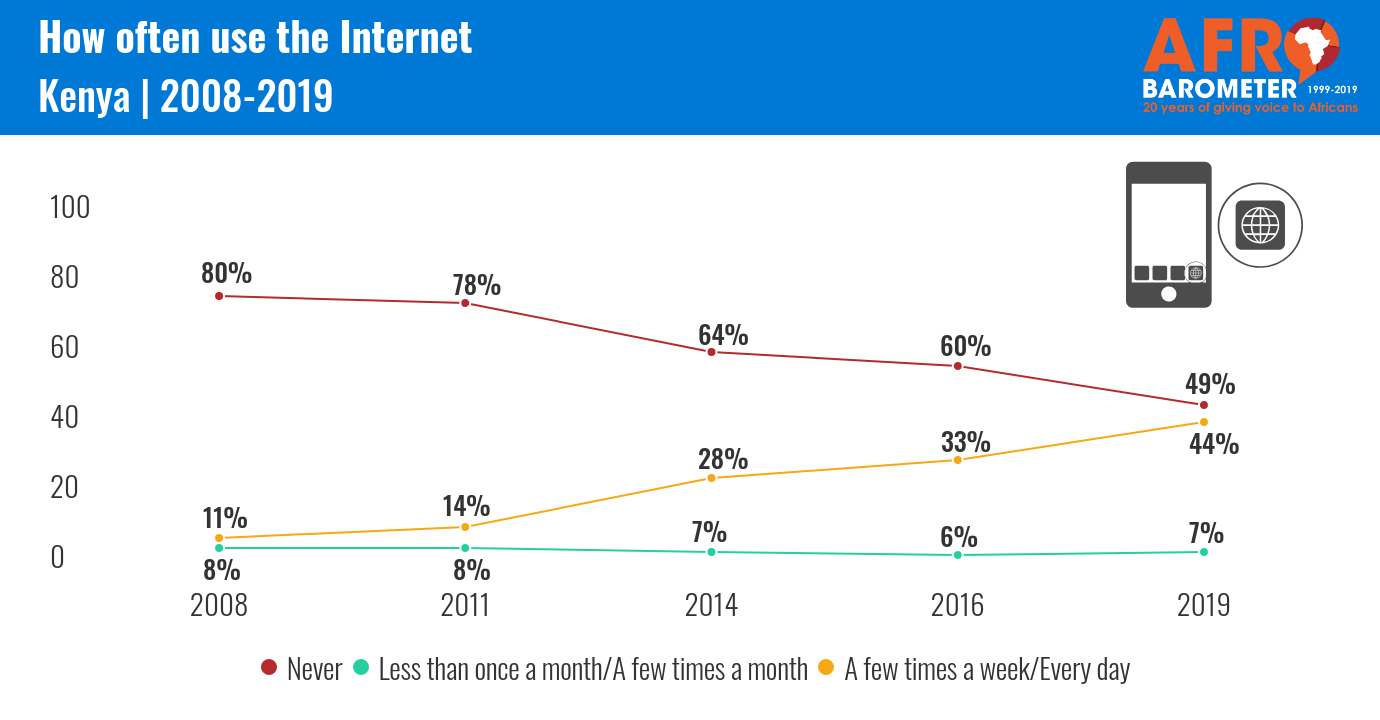- Prior to COVID-19, two-thirds (68%) of Kenyans who had contact with a public school said they found it “easy” or “very easy” to obtain school services. And three-fourths (75%) of all respondents saw the government as doing a good job of addressing educational needs.
- In terms of communications devices that could be used for remote learning, most households had a mobile phone (95%) and a radio (87%). A majority (59%) also had a television, but only 19% had a computer
- Regular use of the Internet has quadrupled over the past decade, from 11% in 2008 to 44%. But half (49%) of Kenyans still “never” went online as of 2019. Poor, rural, and less educated citizens were less likely to use the Internet.
- Only 44% of Kenyans said they receive reliable electricity from the national grid. Many others use solar panels, including almost half (46%) of rural households.
- Survey findings highlight barriers to participation in remote education, but also the importance of implementing successful e-learning strategies to avoid a “Generation COVID” that suffers economically in the future due to lack of education

As COVID-19 reached the shores of Africa, many governments reacted by shutting down much of economic, social, and public life in order to slow the spread of the disease. On 15 March, with only three confirmed cases of COVID-19 in the country, the government of Kenya closed all schools and imposed curfews, among other measures. On 7 July, with more than 8,000 confirmed cases, the government announced that primary and secondary schools would remain closed until 2021 and teaching would be moved to non-contact platforms (BBC, 2020; News24, 2020).
While the government and the state-run Kenya Institute of Curriculum Development have made school programs available via radio, television, and the Internet, critics have pointed to access barriers for many of Kenya’s 17 million pupils (Daily Nation, 2020; Parsitau & Jepkemei, 2020).
Afrobarometer survey findings confirm substantial gaps in access to remote-learning technology in Kenya, especially for poor and rural households. While most Kenyans have mobile phones, only half can access the Internet that way, and computers are available in just one-fifth of households. Across socio-demographic groups, radio is the most widely accessible medium.
